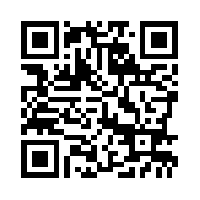167 Study Questions, Activities, and Resources
Study Questions and Activities
The Hollow Men
- Compare and contrast “The Hollow Men” and The Waste Land. “The Hollow Men” was written several years after The Waste Land. Does “The Hollow Men” perpetuate the stark vision of The Waste Land, accentuate it, or offer more hope for salvation? Support your answer.
- Consider the form of “The Hollow Men”: short, free-verse lines, in five parts, sub-divided into stanzas of various length and number. Some lines seem to end before the poet’s thought is completed. How does this form augment the poem’s theme?
- Is “The Hollow Men” as relevant today as it was when Eliot wrote it? Who are “The Hollow Men” of contemporary society, and what do they need to lead a more fulfilling life?
The Journey of the Magi
- Compare and contrast the tone (cf. Glossary) of “The Journey of the Magi” with the tone of the earlier poems by Eliot. Is there a difference in tone? How do you account for the difference or the lack thereof?
- Like “The Love Song of J. Alfred Prufrock,” “The Journey of the Magi” is a free-verse narrative poem, its speaker one of the Magi or Wise Men. Compare and contrast the characters of Prufrock and the Wise Man.
- Is “The Journey of the Magi” a Christian poem only, or is it relevant to people of other faiths? Explain your answer.
The Love Song of J. Alfred Prufrock
- What features of “The Love Song of J. Alfred Prufrock” identify it as a dramatic monologue (cf. Glossary)?
- Why does Prufrock find it impossible to ask “the overwhelming question”? What changes might he make to his life and attitude that would help him ask the woman the question?
- Does Prufrock evoke your pity? Your condemnation? Can you identify with him, in any way?
The Waste Land
- The Waste Land is widely considered to be one of the great poems of the 20th century. How do you account for its reputation? Do you think its reputation is justified?
- In its form, The Waste Land resembles a montage film, with sudden jump cuts from one scene to another, the relationship among the scenes often indeterminate, at least initially. How does the form of the poem augment its meaning?
- In what sense (if at all) would you say The Waste Land remains relevant to contemporary society?
Resources
Voices and Visions. A useful video documentary on T. S. Eliot. http://www.learner.org/vod/vod_window.html?pid=595
Attributions
Figure 1:
Thomas Stearns Eliot by Lady Ottoline Morrell (1934) by Lady Ottoline Morrell (http://commons.wikimedia.org/wiki/File:Thomas_Stearns_Eliot_by_Lady_Ottoline_Morrell_(1934).jpg) is in the Public Domain.


